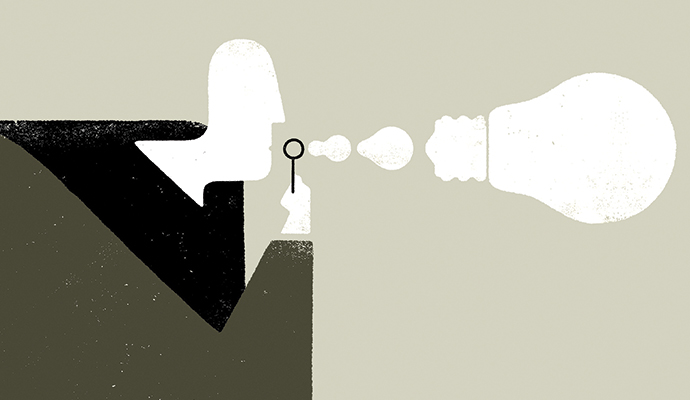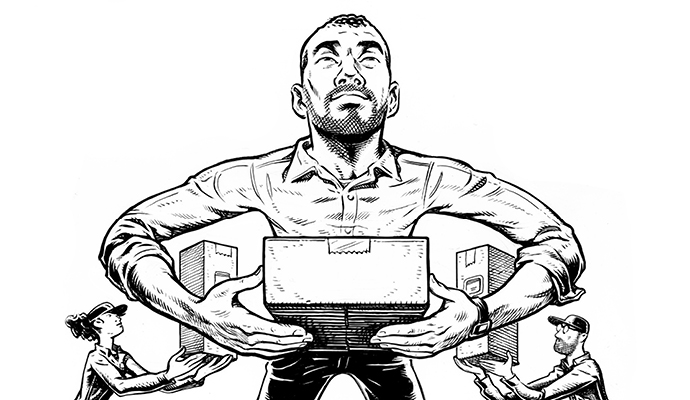Making the Most of Customers
The most innovative companies see consumers for who they really are.
(originally published by Booz & Company)A couple of decades ago, Harvard marketing guru Theodore Levitt gamely observed that customers don’t want quarter-inch drills; they would prefer to buy quarter-inch holes. He advised companies not to focus on products but to concentrate on developing specific solutions to specific problems or tangible benefits. In other words, don’t talk about the size of the drill but about the flawless hole the drill bit makes in sheetrock.
Such an approach, advanced at the time, is actually quite limited today. In the current business environment, customers don’t care about buying the drill or even the hole; they simply want to decorate their home by putting up pictures. What they want is to experience the sense of accomplishment and enhanced daily life that comes from pursuing home improvement projects. All those pesky details — flawless holes, drill sizes, and so on — are factors they would prefer not to spend much time thinking about.
We characterize companies that comprehend this as achieving customer advantage, because they have the capacity to leverage a deep understanding of how people absorb and assimilate products and services into their daily routines. The goal of customer advantage is to identify and develop innovations — products and services, new business models, go-to-market models, marketing programs, and service configurations — that fit into and change customers’ lives, are relevant to the everyday challenges customers face, and create transformational customer experiences.
Netflix, the movie rental business founded in 1999, provides a good example of what customer advantage looks like. Cofounder and CEO Reed Hastings saw the hassle that people go through to return movies (maybe they have children in the car, perhaps it’s raining, or they don’t really have the time to swing by the movie rental store) and the frustration they feel when they must pay a late fee. Hastings was once charged a $40 late fee for returning Apollo 13 past its due date. He set out to make the routine of renting and watching movies more rewarding. His company took an existing product (movies to view at home), a simple Web site, and an existing service (regular mail delivery) and molded them to provide a new offering that people accepted and assimilated readily into their lives.
What’s important here is not simply getting movies at regular intervals through the mail with no due dates, although that was the initial attraction for many customers. Netflix’s opportunities are much bigger; it has the potential to create a higher level of customer advantage.
Through its Cinewatch system, Netflix captures how needs and desires change over time for each of its 6 million subscribers. It urges its customers to participate in a rating exercise; the average user rates more than 200 films, and Netflix crunches customers’ rental histories and film ratings to predict what they will like. So each time a customer visits the Web site, his or her experience is truly tailored; as the customer provides more feedback, the company recommends more movies.
A great feature, but that’s really the tip of the iceberg. The information Netflix gathers regarding customer likes and dislikes helps Netflix decide whether to buy a DVD and how much to pay for rights, and whether to sponsor movies and documentaries, even independent ones that otherwise would never be produced. Potentially, as the company bypasses Hollywood for content, it could influence filmmakers, producers, and agents as an arbiter of what people want to see.
For example, based on Cinewatch results, Netflix invested in the documentary Born into Brothels when no studios would touch it. Netflix staffers then recommended the movie and some 500,000 customers eventually rented it. Born into Brothels went on to win the Oscar for best documentary. Ultimately, Netflix can democratize filmmaking, help young filmmakers, and potentially disrupt the entire film industry in its quest to continue satisfying its customers. This is capturing the ecosystem of demand at its fullest.
Most companies are unable to gain customer advantage the way Netflix has, or, indeed, the way Apple has with its growing line of iPod products and services. The problem is that although many companies listen to customers, that in itself is not sufficient. As Henry Ford once acidly noted, “If I had asked customers what they wanted, they would have told me they wanted a faster horse.” Even the most efficiently run focus groups and customer surveys are contrived circumstances, tending to elicit results that don’t translate nearly as well as they should into the real lives of the people who might do business with your company in the future.
All too often, marvelous insights gained about what the people who buy particular products do and how they live become quickly absorbed into a corporate mind-set already well-furnished with knowledge of existing product lines, innovations in the works, and competitors’ market positions. Most critical, the link between customer experience and existing company context is never broken — managers never let go of their own context of products, services, and capabilities. In practice, as opposed to theory, most companies’ best attempts to learn from customers’ experiences result in little more than incremental improvements.
I have been studying companies’ connections and disconnections with consumers for more than 25 years, and have also worked inside a huge number of firms. I have researched innovation practices within organizations ranging from the Allianz Group to Zara, from General Electric to Unilever, and from BMW to Frito Lay. Across all of this research, a common theme has emerged and intensified. If a company is truly to innovate time and again, and is to achieve profitable growth and create customer advantage, it must do three things:
-
Understand the people it is trying to serve as individuals, apart from any connection or interaction with the company. That is, the company must be able to temporarily let go of its current business strategies, products, and brands as it observes how people (not just customers and potential customers) go about their daily routines.
-
Know how to go beyond its own perimeters of product, markets, and competencies; let go of and challenge the assumptions, common practices, and golden rules of doing business still held today and go beyond what it has learned from consumers. Only then can the company conceive of entirely new opportunities by innovating across customer behavior. It must know how to define the spaces of greatest opportunity that others have yet to imagine.
-
See itself from the outside in and formulate strategies around people’s behaviors, not just seek to satisfy consumer needs and desires or customer requirements. The company must execute activation plans that engage consumers and seamlessly fit innovations into their behaviors so that they absorb and assimilate them. It must create transformational life experiences, not just communicate features and benefits.
Only by doing these things can companies consistently and successfully bring to market winning innovations, achieve profitable new growth, and reinvent their business for the future.
Reprinted and adapted by permission of Harvard Business School Press. Copyright © 2007 Erich Joachimsthaler; all rights reserved.
Author profile:
Erich Joachimsthaler (ej@vivaldipartners.com) is the founder and chief executive of Vivaldi Partners, a marketing strategy firm. This article is excerpted from his latest book, Hidden in Plain Sight: How to Find and Execute Your Company’s Next Big Growth Strategy (Harvard Business School Press, 2007).



